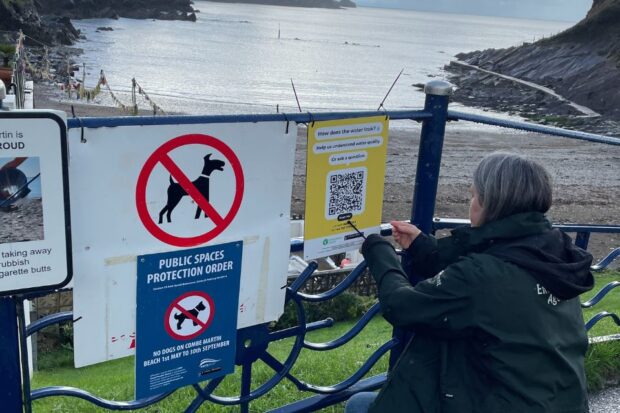
Hello Lamp Post-driven QR signage being put up at Combe Martin in Devon
Valuable new information about how and when people use popular bathing waters has become available, ten months after AI-powered signage was launched at pilot sites around England.
Under the Water Watch project, QR signs at popular bathing water destinations in the South West and the North reveal that Sunday was their busiest day for people to share their experiences and that one in three users are keen to be involved with Environment Agency-backed citizen science.
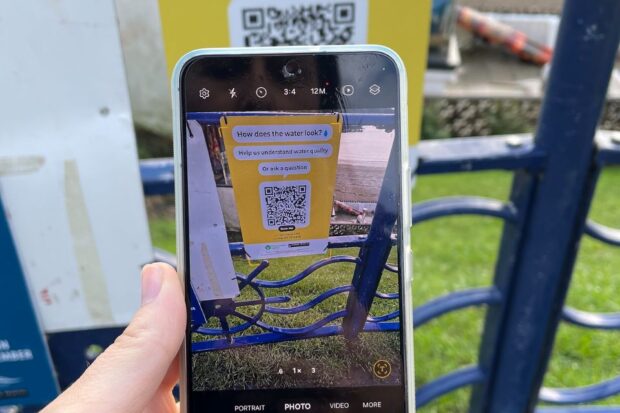
Between September 2024 and July 2025 more than 3,000 responses were collected using the Hello Lamp Post platform at six bathing waters: Par Sands in Cornwall and Combe Martin in Devon, two sites at Lake Windermere, River Ribble at Edisford Bridge and River Nidd in Yorkshire.
Interactive signage, including QR codes, were placed on fences, benches and walls. Smartphone users then scan the code or text the number on the sign to share their observations and views and get information about local bathing waters.
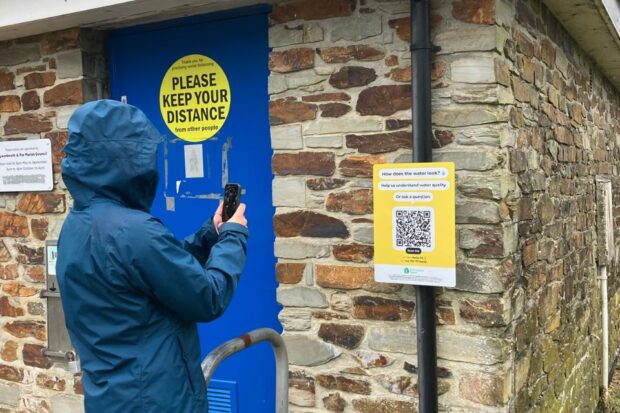
One of the signs at Par Sands in Cornwall being used
Operating both during and outside the bathing water season, the signage provided lots of useful insights and information on water quality and how bathing waters were used throughout the year, including:
- The busiest location for water users was Lake Windermere, with people in the water observed 43% of the time out of the bathing water season.
- During the bathing water season, this rose to 83.3% — showing a clear increase in water activity during peak months.
- The busiest day for signage was Sundays.
- The busiest month was October 2024, the first full month the signage was in place.
- On average, there has been greater engagement within the bathing water season
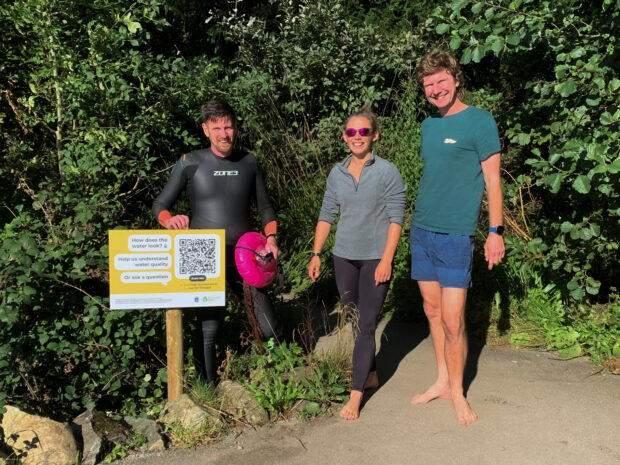
Swimmers at Lake Windermere with one of the signs
Across Combe Martin, River Ribble and Lake Windermere an average of 9.5% of Hello Lamp Post users reported seeing something positive or special, including children enjoying the water, beautiful scenery, or interesting wildlife.
Across all the sites an average of 23.7% of Hello Lamp Post users said they had seen potential causes of water pollution, including foam in the water, blue-green algae, dog waste and litter.
At Lake Windermere users answering on Hello Lamp Post consisted of residents (37.2%), frequent visitors (13.7%) and occasional visitors (49.1%).
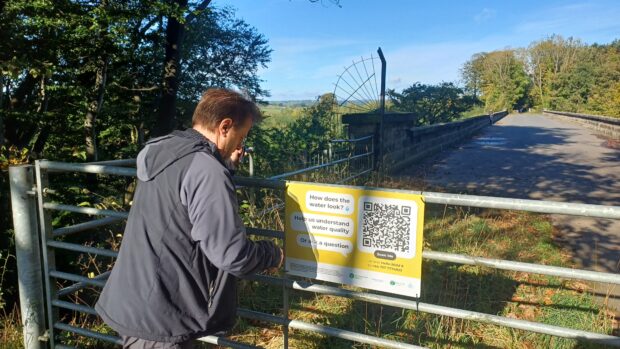
Signage being put up by the River Nidd
In the Nidd, 96.5% of participants said it was essential or important to maintain a healthy environment. Across all sites 33.9% expressed interest in getting involved with citizen science initiatives in the future.
Throughout the pilot, the most answered questions by the AI tool were what is the water quality? What local citizen science initiatives can I get involved with and how do I report pollution?
The statistics collected through Hello Lamp Post will be used to supplement the data already gathered by the Environment Agency, as part of its monitoring programmes. To date the data collected has been used to compliment bathing water investigations and helped keep us informed about the presence of blue-green algae.
The next phase of the Water Watch project is now in development and will see the continuation of the place-based signage. This will see some new locations and the development of a national conversation to allow anyone to get involved from their local water course. Visit the Environment Agency’s Supporting Citizen Science page to find out more.
This ongoing project adds to our recently published report into water recreational use across England that gives robust and insightful data on how people use our waterways for the first time.
Together these sets of data will help us to plan our resources effectively as we work with the Government to implement their bathing water reforms.
We are continually working to ensure the answers being given by Hello Lamp Post stay up to date, and that it signposts to the most relevant and useful information.
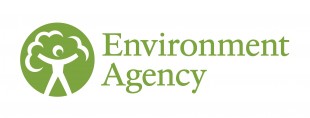
Leave a comment